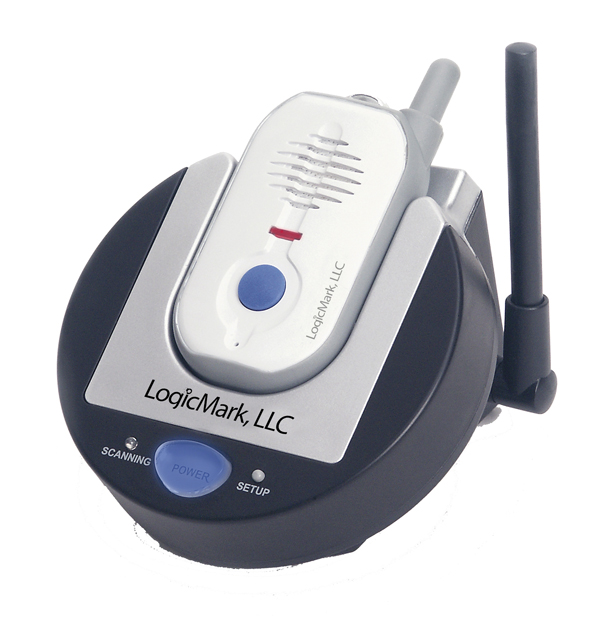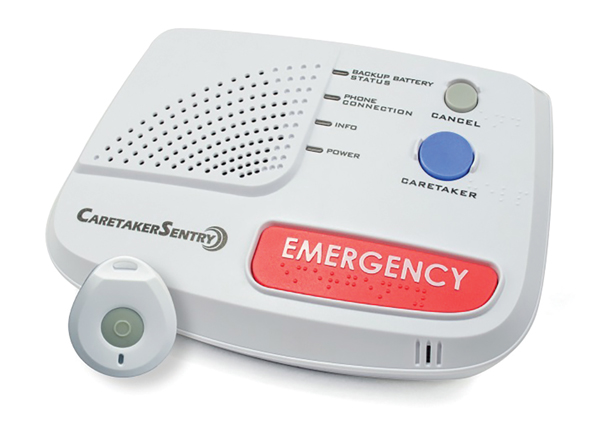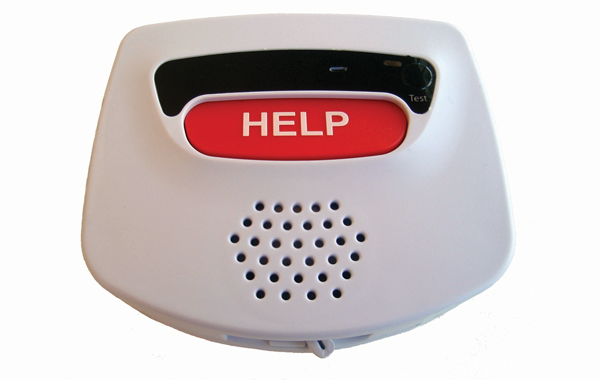
While there are many different medical alert systems and services, the desired end result is the same—getting help for seniors when they need it. It is important, as with any product or service, to understand what the patient or customer needs and select accordingly. For the HME provider, a better understanding of which products will enhance your offerings or allow you to serve your customers better can help boost the income potential of this important market segment.
Monitored Systems and Accessories
A typical medical alert system (as seen on TV) is a monitored system, consisting of a base unit with a speaker that plugs into an electrical outlet and into the patient or customer's phone line. The system connects directly to a central station and is monitored 24/7. When the customer, wearing a pendant presses the button on the pendant, the emergency operator is contacted and provides assistance based on previously given instructions. If the customer needs EMS, the operator will dispatch them immediately. A monitored system is typically paid for on a monthly basis by the customer and gives the provider a recurring profit. This is a perfect solution for a customer or patient who wants to age in place. Home health providers can easily add this type of system to their present offerings and realize additional profits. An enhanced version of a typical monitored system is one that has the speaker in the pendant itself, allowing the customer to talk directly to the operator even if he or she is away from the phone. This version has the same components, connects the same way and communicates in the same manner as the standard monitoring system, but gives the customer much more flexibility.
 A non-monitored basic system includes two-way voice interaction and a direct dial to 911.
A non-monitored basic system includes two-way voice interaction and a direct dial to 911.Emergency Wall Communicator
The emergency wall communicator is an emergency button/speaker that can be permanently mounted in a location such as next to a bed or bathtub. If the button is pushed, the emergency operator can talk directly to the patient through the emergency wall communicator. This is particularly useful as a back-up if the customer removes pendant or is bedridden.
 A medical alert system with two-way voice pendant
A medical alert system with two-way voice pendantCellular Communication Accessory
Eliminating the need for a landline, the cellular communication accessory connects to the monitor unit and communicates with the central monitoring station over the cellular network.
 An emergency wall communicator is permanently mounted near a bed or tub and connects directly to an emergency operator.
An emergency wall communicator is permanently mounted near a bed or tub and connects directly to an emergency operator.Non-Monitored Systems and Accessories
There are two types of non-monitored medical alert systems, both utilizing two-way pendants. The first works mostly like the monitored systems but does not connect to a central station. Instead, the customer or patient programs a list of contact persons into the base unit. In the event of an emergency, the customer presses the button on the pendant, and the system begins dialing the contacts in sequence until one of them answers. The customer then can speak with the contact person directly through the pendant. As a back-up feature, if none of the contact persons that are programmed into the system answer, it will dial 911 automatically so the customer is not left without help. This type of arrangement is perfect for home care providers that do not want to be involved in the billing and central monitoring center set-up that a monitored system requires. There is no monthly charge to the customer with this type of system, so it can be sold either over the counter or through delivery for a one-time charge to the customer. The emergency wall communicator can also be added as an accessory to the non-monitored system if a permanently installed button is required. The second type of a non-monitored medical alert system is the basic model. It also has two-way voice communication through a pendant, but cannot be programmed to call the customer's contacts. Instead, when the customer presses the button on the pendant, the system dials directly into 911. When 911 answers, the customer can talk to them directly through the pendant. Again, this system does not require a connection to a central monitoring station. This is perfect for providers that want to carry a budget-priced system and is excellent for the customer who wants to spend as little as possible but still be able to get help when needed.
Mobile Medical Alert Systems
Many seniors are still active outside of their homes and communities. Some may golf, but have a heart condition. Others may drive great distances to visit family. Medical alert systems for these seniors must extend beyond their homes and yards. A mobile medical alert system can be worn with a lanyard or a belt attachment. The pendant has two-way voice communication, allowing direct access to the emergency operator through the pendant. A mobile system uses GPS to determine the customer's location when the button is pressed and uses the cellular network to communicate with the central monitoring center. This system is a great option for active seniors, is billed monthly to the customer the same as a monitored system, and can create a monthly income for the provider. There is a medical alert system available to suit every customer's need. Each one summons help when the customer needs it, but all work in slightly different ways and have varying costs, allowing home care providers to tailor their medical alert options to both their clientele and their business models.
